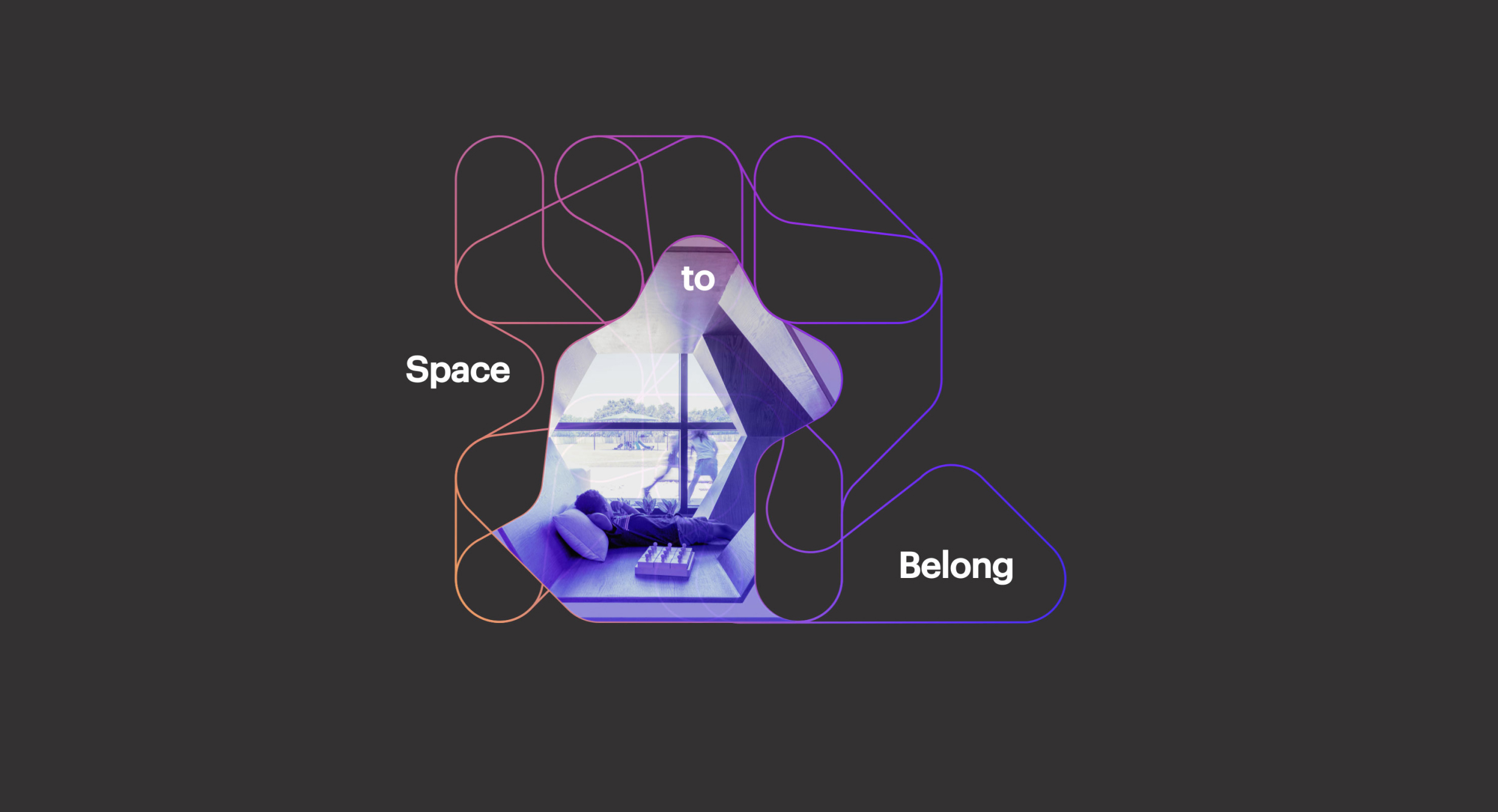
Space to Belong: Fueling Education Design with an Equity-Centered Approach
- Renae Mantooth, PhD
- Leonardo Gonzalez Sangri
- Zac Rudd
About one in three middle and high school students say they can’t really be themselves at school, and only half say they feel like they’re part of their school. When we talk about belonging within today’s educational environments, we understand that a sense of belonging is a human need that precedes students reaching their full potential. As architects, interior designers, and researchers of learning spaces, we’re not here to say that large, societal concerns can be fully traced back to the built environment, but we must take responsibility. We can help deliver transformation to students, teachers, and their communities through more inclusive processes and designed environments.
Designers often attribute social issues as a product of externalities, from pedagogy to policy, yet design sets the stage for student and teacher experiences. We seek inclusive ways to connect people through design.
We’ve launched #spacetobelong to build awareness of learning environments that are radically inclusive. To design them, we prioritize the human experience and embody an ethos of equity to cultivate belonging for educators, students, and their families alike.
To create learning spaces that liberate, we must first look inward to our own lived experiences because they shape the environments we create. Lived experiences are compounded by power dynamics and intersecting identities. So, to embed design decisions with community values, we must not only bring awareness but diverse representation to our design teams.
Diversity in experience and thought brings about equity-centered innovation toward a more inclusive future.
Members of the design community aspire to be influential agents of change. This is a good thing—we’re driven to help communities through the charisma of beautiful design. But designed environments can impact communities either positively or negatively. Therefore, we take an equity-centered and evidence-based approach to create intentional, meaningful change toward equitable outcomes.
Overtly and subconsciously, people have been historically excluded from the design process on the basis of race, gender, class, sexual orientation, disability, and nationality identities, to name a few. We recognize that schools are composed of rich social dimensions that determine their spatial form, and the cues or messages the built environment sends to its users. We live in a time where schools as institutions have wildly different resources and students of incredibly diverse backgrounds—two aspects with an acute relationship to the surrounding community. And in their relationship with the surrounding community, school buildings are not agnostic. They can help. Or they can hurt.
Augustin Mauro, a Design Professional in the HKS Education practice, understands the importance of incorporating a community’s desires into the design process to help achieve a more inclusive and diverse project
“By actively involving communities in the design process we gain valuable information that can help us eliminate barriers and foster holistic, sustainable development,” Mauro said. “Our projects for UTSA Student Housing and The Place at Honey Springs demonstrate how listening to community needs can profoundly shape the built environment.”
Carefully considering how the built environment responds to diverse needs and perspectives enables holistic, sustainable development. Those diverse needs and views are often deeply layered within a web of intersecting identities, providing richness to our communities, that ultimately impact how people perceive and inhabit space. So, we are actively building equitable and inclusive design methods to untangle this web to avoid prioritizing the dominant perspective.
Conversations about equity in designing educational environments are fraught with complexities. Creative approaches that disrupt the status quo are vital to have real, equitable impact within our communities. Violence in our nation’s schools has led to a heightened perception of unsafety—nearly half of the students today worry about gun violence. Test scores are but one indicator of student success, but after the chaos of COVID-19, they’ve dipped for the first time since recording began. Further, the issues and complexities facing today’s schools have manifested as a mental health crisis. These are significant issues—and we’re exploring how inclusive and equitable design processes can help drive change.
As designers of physical learning, playing, healing, and community spaces, we have a social and moral responsibility to investigate how our identities influence the way we understand the world and the social systems we are part of that potentially subvert intentional designs for belonging and inclusion. We strive for our design process and subsequent design outcomes to be reflexive versus bureaucratic, substantive versus shallow, and bold versus trivial. As architects, designers, and researchers, the better we understand how our processes, decisions, and outcomes influence the people we ultimately serve, the more just a society we can create.
To learn more about this topic or how to partner with HKS for equitable outcomes in education design, contact Leonardo Gonzalez Sangri, Renae Mantooth, or Zac Rudd.